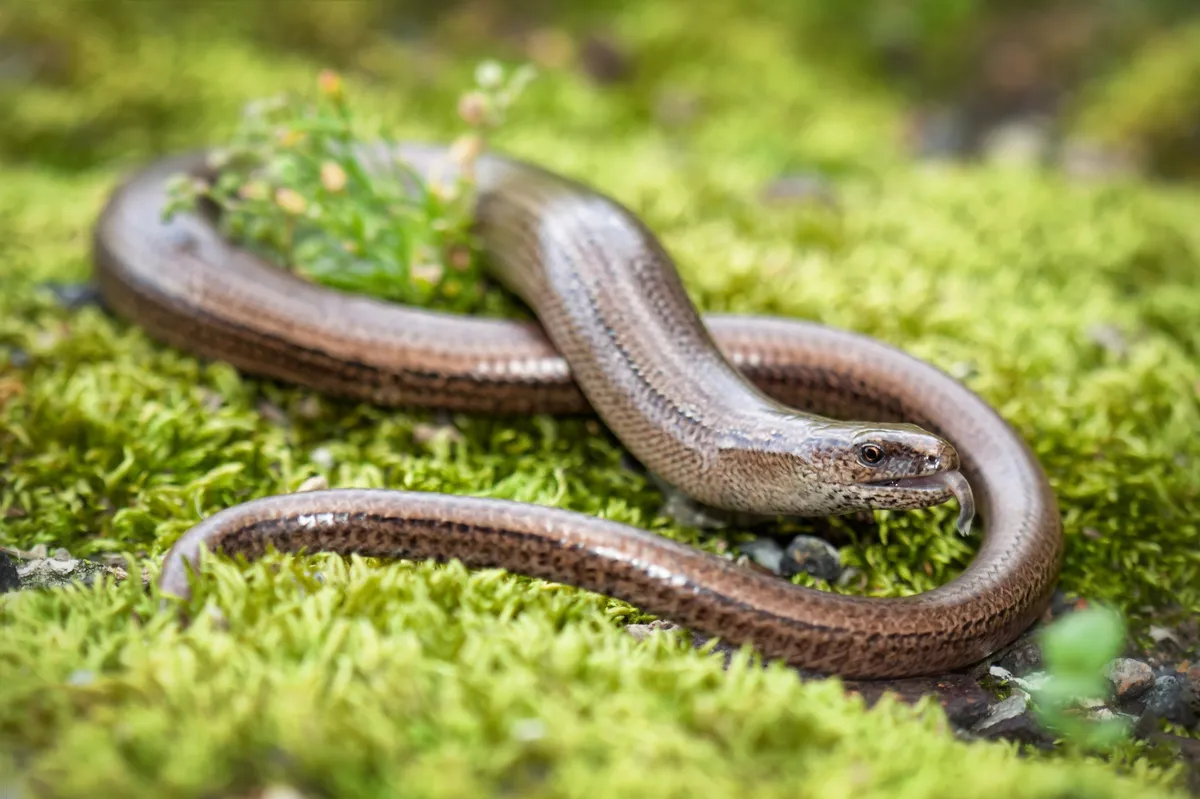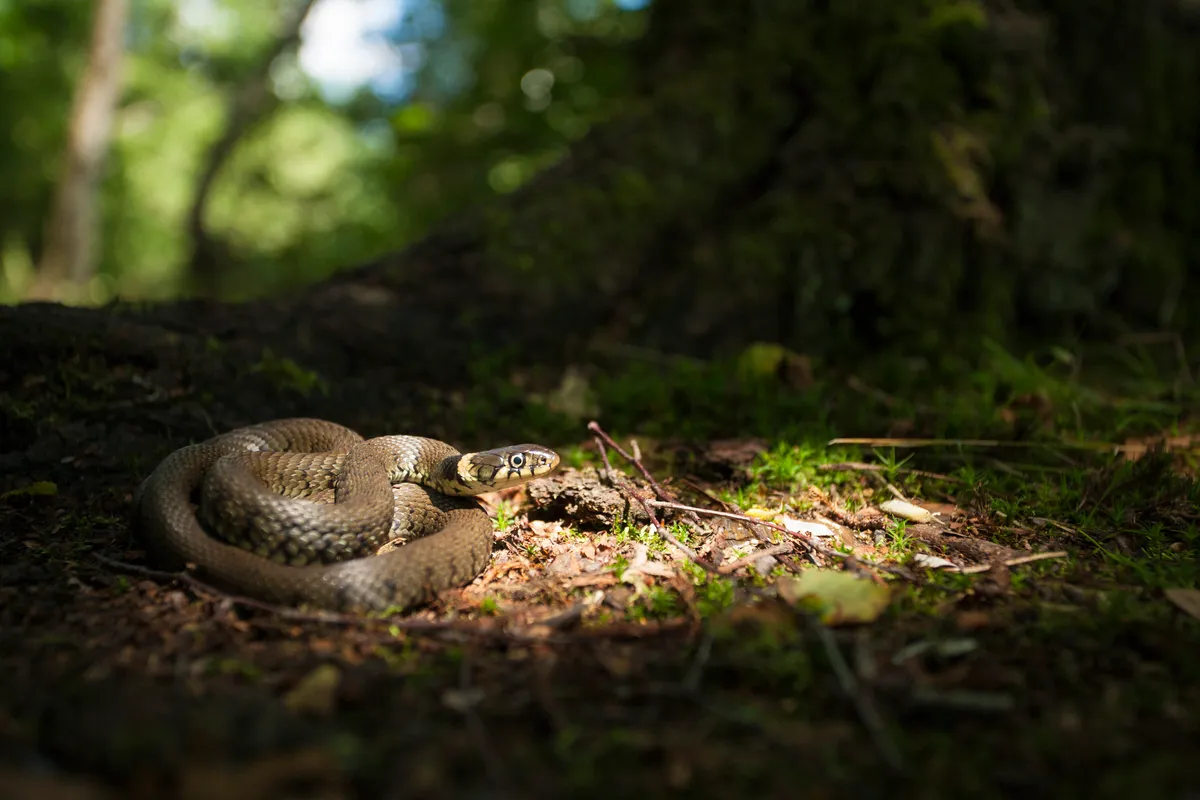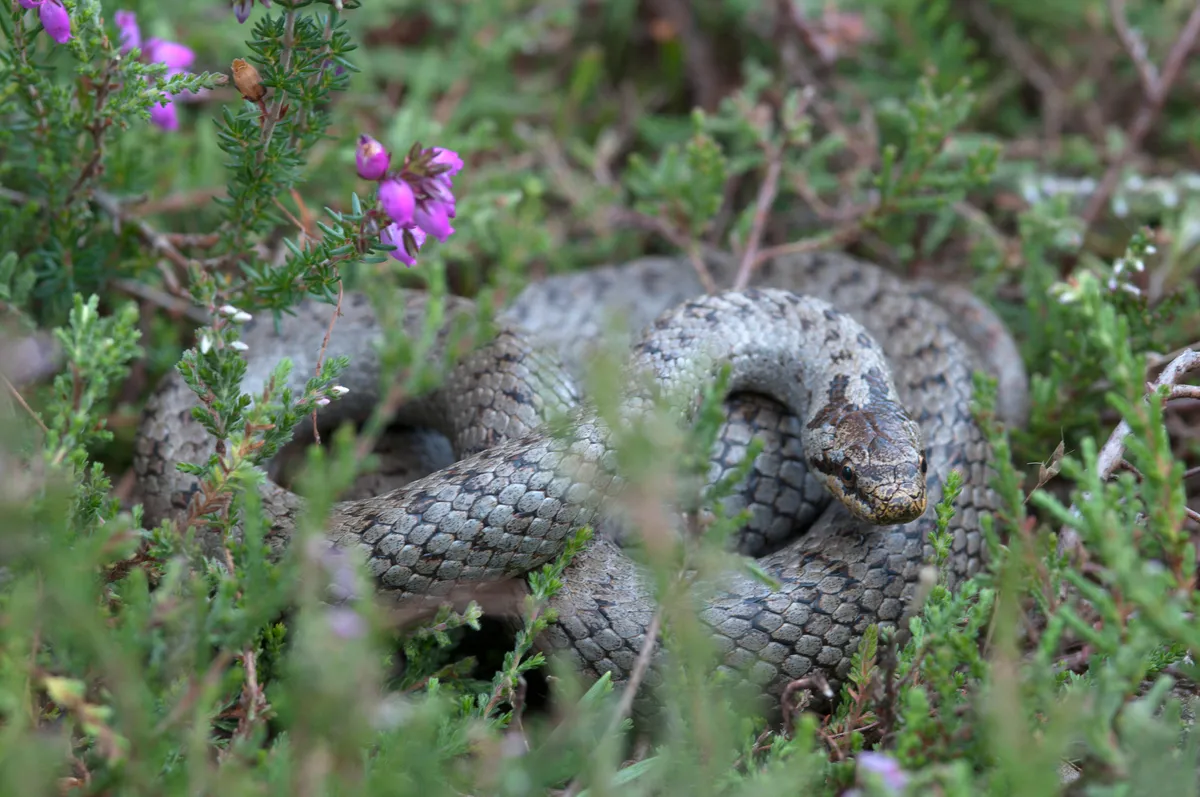How many species of snake are native to the British Isles?
There are three native snake species in the British Isles: the grass snake, the smooth snake and the adder.
The aesculapian snake (Zamenis longissimus) is a species found in Colwyn Bay in north Wales, Brigend in South Wales and by the Regent's Canal in London, and is thought to be the only non-native snake species known to form a breeding population in the UK.
Are slow worms snakes?

Despite their lack of legs, slow worms are not actually snakes, instead they are legless lizards.
Are any snakes found in Ireland?
Ireland has no native species of snakes, though slow worms have been introduced. According to legend, this lack of snakes is thanks to Saint Patrick who is said to have banished these reptiles from Ireland whilst converting the Irish people from paganism to Christianity.
However, there is a scientific reason behind this absence. The most recent Ice Age kept the island too cold for snakes. As the glaciers retreated northwards 10,000 years ago at the end of the Ice Age, so the snakes also moved northwards into western and Northern Europe. They returned to England, Wales and Scotland since these were still connected to continental Europe but met a barrier beyond Wales: The Irish Sea. The land link between Ireland and the rest of the British Isles had been severed by rising sea levels.
Native snakes of the British Isles
Barred grass snake (Natrix helvetica)

Typically referred to in the UK and British Isles as just the ‘grass snake’, this is our largest native snake species, growing up to 1.8m in length. The barred grass snake was previously considered to be a subspecies of the grass snake species, but in 2017, a taxonomic study split the grass snake and barred grass snake into distinct separate species.
The grass snake typically has a olive-green to brown body with black markings on its flanks, with a yellow and black collar marking.
After mating in spring, female grass snakes lay eggs during the summer in warm areas such as compost heaps, these eggs then hatch in the late summer months.
Adder (Vipera berus)

The adder is the only venomous native snake species, and the only viper, found in the UK and British Isles. It is the smallest snake species found in the UK, growing to an average length of only 60cm in length (slightly smaller than smooth snakes and half the size of barred grass snakes).
Male and female adders differ in appearance – known as sexual dimorphism. Females are light or copper brown, whilst males are light grey. Both have a dark zig-zag running down their back. Black adders can also be found, which are usually female.
Following mating in spring, females give birth to live young (known as ovoviviparity) in August or September.
Smooth snake (Coronella austriaca)

The smooth snake is the UK’s rarest snake – and in fact, the UK’s rarest reptile, restricted to sandy heaths in southern England.
Like the adder, it’s a relatively small species compared to the grass snake, and grows to between 60 to 70cm in length. It is grey or brown in colour, with dark markings along its body – which are less defined than those on an adder.
Like the adder, the smooth snake gives birth to live young in September.
Main image: A smooth snake coiled up in heathland in the UK. © Sandra Standbridge/Getty
